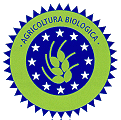Basilicata (older name- Lucania) – ‘Il miele della Basilicata or Il miele Lucano’
Basilicata has two short coastlines, one on the Tyrrhenian Sea and another on the Ionian Sea. Basilicata surface covers 3,9oo miles² (9,995 km²), is mostly mountainous, being covered by the Lucan-Apennine chain. The Pollino massif (7,440 ft or 2,267 m) and the Sirino massif (6,580 ft or 2,005 m) are the highest peaks of this region. The area surrounding Matera, close to the Apulian border, is plain and highly cultivated. Highlights include the Lucanian dolimites, carved by the elements and rising into the sky like dinosaurs with dwellings of Castelmezzano carved into the base. Take the cable flight over them called the Flight of the Angel. An extreme sport travelling up to 120 km/hr. in the Vulture area. Also the Sassi di Matera, ancient dwellings carved into the rock itself, thought to be one of the original settlements of Italy 9,000 years ago.
It is the eleventh place for the production of honey in Italy. Lucan beekeepers have begun the process of obtaining PGI certification for Wildflower, Orange, Chestnut and Eucalyptus honey.
 Many organic versions of honey are available due to the availability of natural, untreated areas (organic versions are known as BIO – Agricoltura Biologica).
Many organic versions of honey are available due to the availability of natural, untreated areas (organic versions are known as BIO – Agricoltura Biologica).
Honey City:
Ripacandida, Potenza, Italy (home of The Mellinoteca, “L´Oro dei Fiori”, “The Golden Flower” an exhibition center dedicated to education and production of honey, including the sale and tasting of honey.)
Types of Honey:
- Chestnut Honey Lucan
 – ‘Miele di castagno Lucano’ (Castanea sativa Mill)
– ‘Miele di castagno Lucano’ (Castanea sativa Mill) - Citrus Honey – Orange, Lemon, Grapefruit – ‘Miele di agrumi’ (Citrus spp.)
- Clover Honey – ‘Miele di trifoglio’ (Trifolium spp., T. incarnatum)
- Eucalyptus Honey Lucan
 – Red River Gum – ‘Miele di eucalpito’ (Eucalyptus camaldulensis Dehnh)(Tasting notes: Sweet flavor with distinctive aroma with a hint of licorice, dried mushroom and caramel)
– Red River Gum – ‘Miele di eucalpito’ (Eucalyptus camaldulensis Dehnh)(Tasting notes: Sweet flavor with distinctive aroma with a hint of licorice, dried mushroom and caramel) - Honeydew Lucan – ‘Miele di melata Lucano’ (From: Linden – Tilia platyphyllos Scop., Sumac Scotia – Cotinus coggygria, Oak – Quercus ssp., Maple – Acer ssp.) (Tasting notes: Dark amber to black with greenish tint, strong tasting, slightly malty, balsamic. Slow crystallization)
- Orange Honey Lucan
 – ‘Miele di arancio Lucano’ (Citrus aurantium)(Tasting notes: Clear, white granulated with intense bouquet of oranges, intense flavor, floral and fruity. Over time the aroma becomes more fruit-like, similar to marmalade.)
– ‘Miele di arancio Lucano’ (Citrus aurantium)(Tasting notes: Clear, white granulated with intense bouquet of oranges, intense flavor, floral and fruity. Over time the aroma becomes more fruit-like, similar to marmalade.) - Sulla (aka Spanish sainfoin, French honeysuckle, Sweetvetch) – ‘Miele di sulla’ (Hedysarum coronarium L.)
- Spring Wildflower
 – ‘il Miele Millefiori Primaverile’ (Prevalent: Willow, Borage, Bird’s-foot trefoil) (Tasting notes: Light-colored with a delicate aroma with hints of vanilla, a light fruity taste and slow crystallization – good with salads, white meat, ice cream and salads)
– ‘il Miele Millefiori Primaverile’ (Prevalent: Willow, Borage, Bird’s-foot trefoil) (Tasting notes: Light-colored with a delicate aroma with hints of vanilla, a light fruity taste and slow crystallization – good with salads, white meat, ice cream and salads) - Summer Wildflower
 – ‘il Miele Millefiori Estivo’ (Prevalent: Rubus spp., Clematis) (Tasting notes: Amber colored with a delicate aroma and a persistent taste – good with goat cheese, in roast glaze and with mushrooms)
– ‘il Miele Millefiori Estivo’ (Prevalent: Rubus spp., Clematis) (Tasting notes: Amber colored with a delicate aroma and a persistent taste – good with goat cheese, in roast glaze and with mushrooms)
Less Common/Rare or limited production:
- Hawthorn – ‘Miele di Biancospino’ (Crataegus monogyna)
- Heather Honey – ‘Miele di erica arborea’ (Erica arborea L.)
- Ivy – ‘Miele di edera’ (Hedera helix)
- Knapweed – ‘Miele di Scabiosa’ (Centaurea scabiosa L.)
- Lime Tree (aka Linden or Basswood) – ‘Miele di tiglio’ (Tilia spp. may have strong element of Castanea – Chestnut)
- Rosemary – ‘Miele di rosmarino’ (Rosmarinus officinalis)
- Schiucciolo (aka Yellow Star Thistle) – ‘Miele di schiucciolo, Spino giallo’ (Centaurea solstitialis)
![]() PAT – Honey certified as a Traditional Italian Food.
PAT – Honey certified as a Traditional Italian Food.
![]() Honey identified and cataloged by the Arc of Taste (Slow Foods)
Honey identified and cataloged by the Arc of Taste (Slow Foods)
—————————————————
References and Further Reading
Italian – Basilicata Region, Italy


Recent Comments